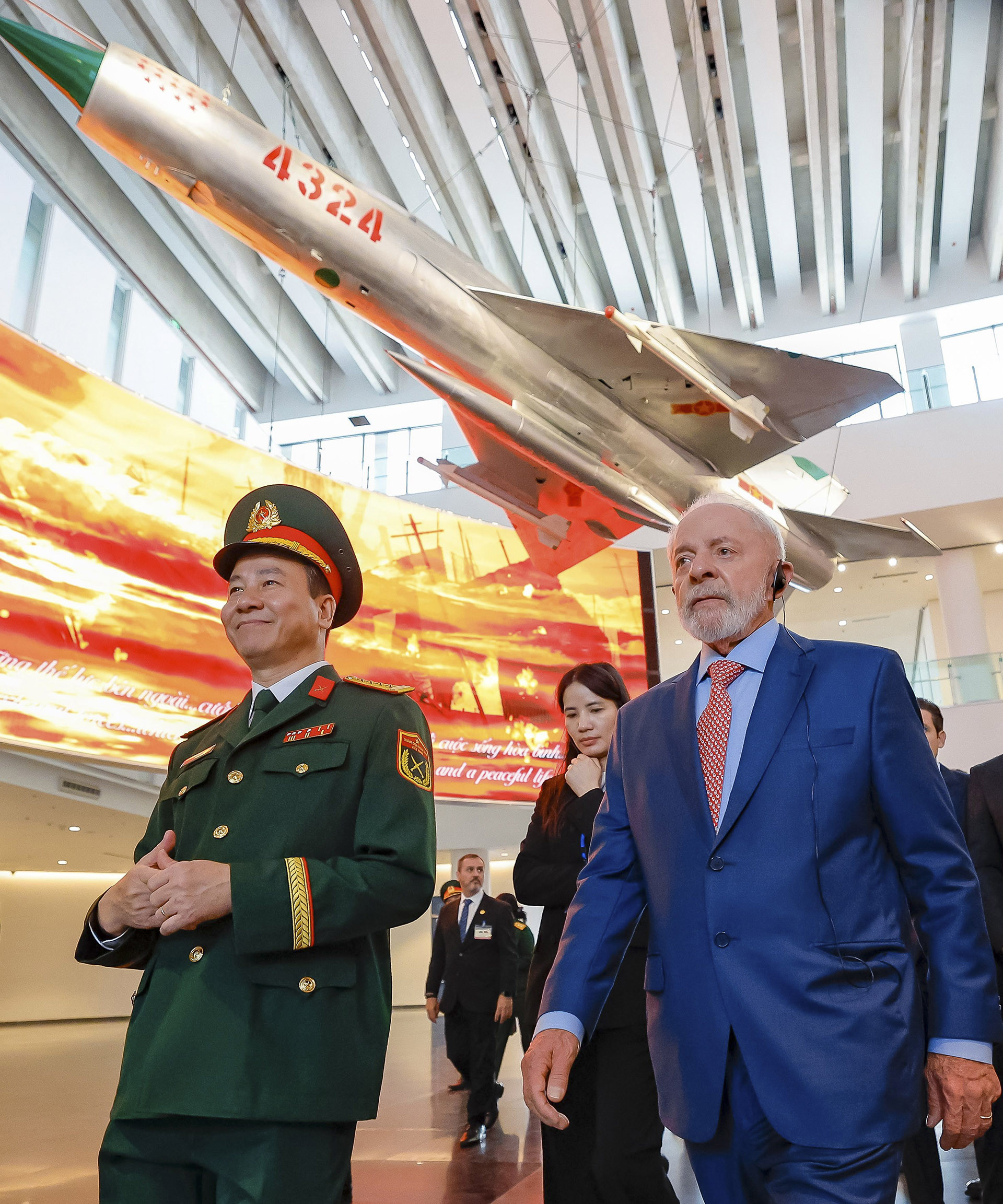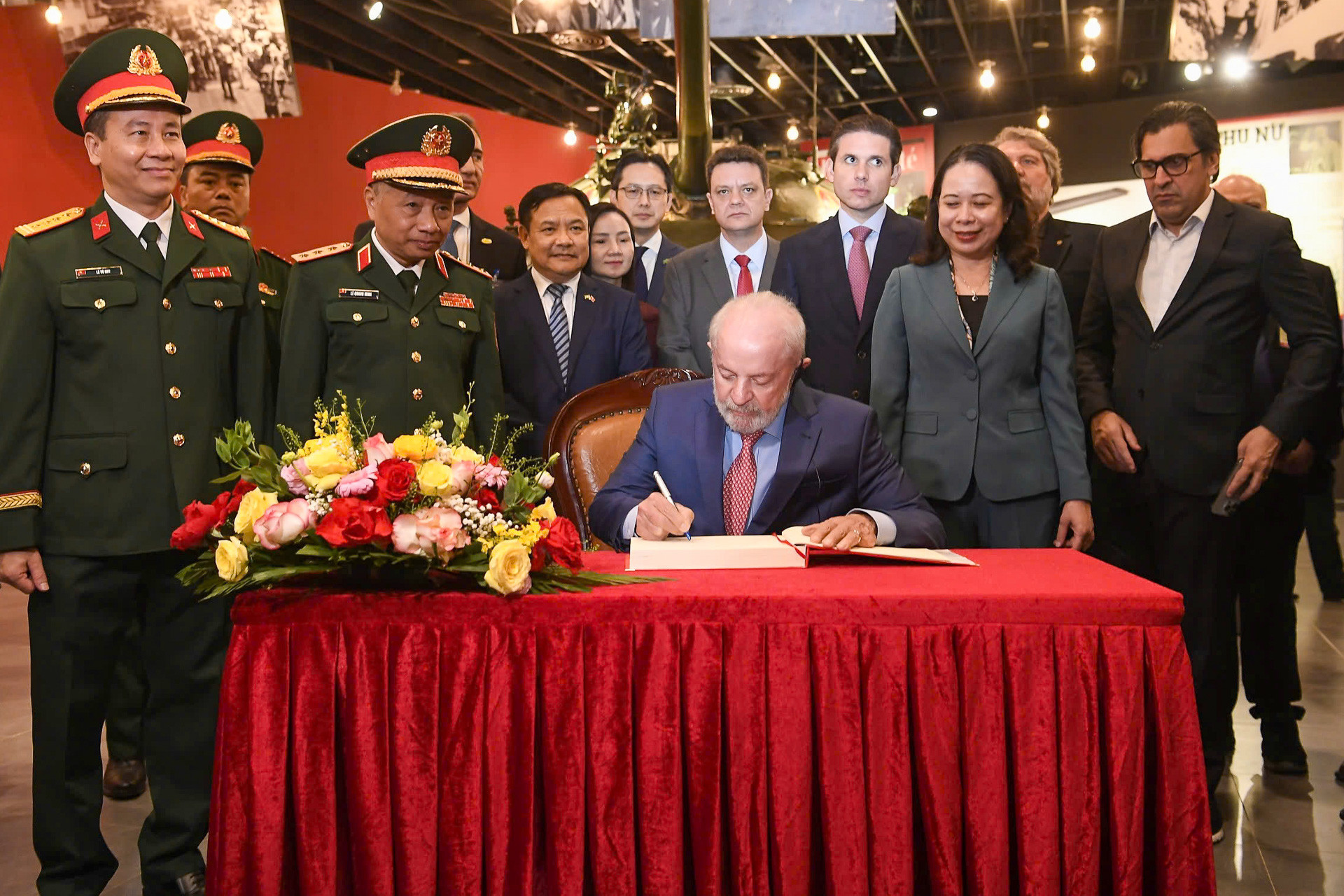As part of his official visit to Vietnam, Brazilian President Luiz Inácio Lula da Silva joined Vice President Vo Thi Anh Xuan on March 29 for a tour of the Vietnam Military History Museum in Hanoi, where he viewed key wartime relics, including the legendary tank 843 that broke through the gates of the Independence Palace in 1975.
President Lula da Silva, considered a long-time friend of Vietnam and part of the “Vietnam generation” of international supporters during the country’s struggle for independence, expressed deep admiration for the resilience and courage of the Vietnamese people.
Tribute to Vietnam’s history of resistance

Upon arrival at the museum, the president watched an introductory video providing an overview of Vietnam’s history, then toured exhibits covering three major periods:
Anti-colonial resistance against France (1858–1945)
First Indochina War (1945–1954)
Vietnam War (1954–1975)
He was introduced to the MiG-21 fighter jet No. 4324, which downed 14 American aircraft during the Vietnam War. The aircraft was recognized as a national treasure in 2015.
President Lula was also shown artifacts from the early 20th century, including a Nguyen dynasty cannon used in battles against French colonial forces. He praised the Vietnamese people as “one of the most resilient in the world,” having triumphed over powerful military forces throughout history.
Reflecting on shared history



At the exhibit on the founding of the Communist Party of Vietnam, the Brazilian president paused before the historic photo of Nguyen Ai Quoc (later President Ho Chi Minh) speaking at the Tours Congress of the French Socialist Party in 1920. He asked detailed questions about President Ho’s journey to seek national salvation.
President Lula recounted how, in 1912, during his time working on a French ship traveling from Vietnam, President Ho Chi Minh disembarked in Rio de Janeiro and established ties with Brazil’s labor movements — laying the foundation for early bilateral friendship.
In November 2024, Prime Minister Pham Minh Chinh inaugurated a commemorative plaque honoring President Ho Chi Minh in Santa Teresa, a historic neighborhood in Rio de Janeiro.
The delegation also reviewed a passage from Vietnam’s Declaration of Independence, read by President Ho Chi Minh on September 2, 1945, at Ba Dinh Square. Vice President Vo Thi Anh Xuan briefed President Lula on Vietnam’s upcoming 80th anniversary of national independence.
Honoring the spirit of 1975

At the exhibit on the 1975 Spring Offensive, President Lula viewed the T-54B tank No. 843 — the same tank that, along with tank 390, crashed through the gates of the Independence Palace in Saigon on April 30, 1975, marking the end of the war and the reunification of Vietnam.
Standing beside the tank, President Lula signed the museum’s guestbook and expressed admiration for Vietnam’s long and arduous journey toward freedom.
Founded in 1956, the Vietnam Military History Museum is one of six national museums in Vietnam and the flagship museum in the military museum system. In 2019, the Ministry of National Defense began construction of a new facility in the Tay Mo and Dai Mo wards of Nam Tu Liem District, Hanoi.
Tran Thuong & Pham Hai